Toyota Land Cruiser review: Cruising through the Gates of Hell – and ending up wanting more
Toyota's new Land Cruiser is as tough and reliable as 4x4s come – something that Toby Keel was only too grateful about while cruising through the 'Gates of Hell' in Namibia.
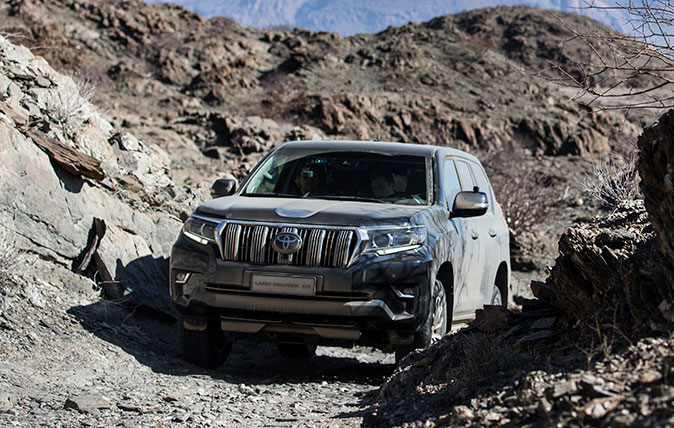
It hasn’t rained in the Namib Desert for seven years.
That’s not to say they haven’t had a few drops here and there, or the occasional light shower. But the last time they had what we would think of as a proper rainstorm was 2011 — a fact which, on the face of it, makes it an odd place to test out a 4x4 with a view to how well it might perform in Britain.
Yet there was logic in Toyota’s decision to show off the latest iteration of its famed Land Cruiser 4x4 in a mystical, ancient place that is the oldest desert on Earth. The plan was to track up the coast, head inland across deserts, mountains and riverbeds kept damp by underground streams, before circling back to the starting point. That way we’d be able to try the car out on sand, gravel, rocks, mud and two feet of water, all in the space of a few days.
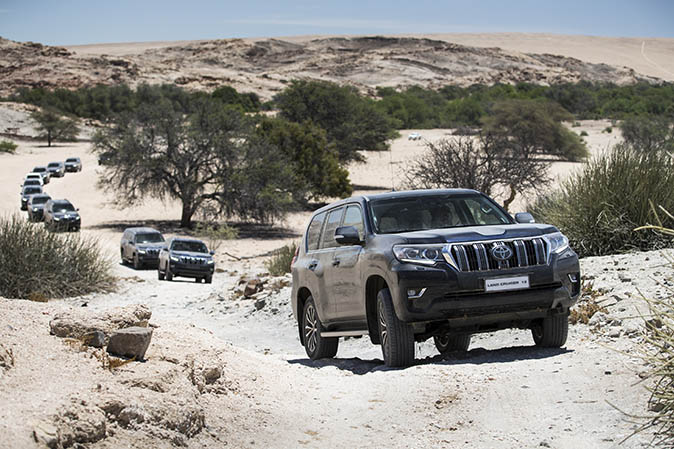
Thus it was that a day after arriving in Namibia I found myself staring up a near-vertical four-foot slope strewn so carelessly with boulders that it looked a like a still photograph of a rockslide in progress. All I could think was How on earth am I going to get this thing up that?
I needn’t have worried. The two-tonne monster just whizzed up and over the rocks with such carefree insouciance that it put me in mind of watching my four-year-old walk nervelessly along the top of a wall, entirely ignoring the sheer drops either side that are giving his parents heart attacks. It didn’t take long for the car’s ability to transmit itself to the driver in the form of confidence, and after that I began to focus on the true business: the question not of how you’re getting there, but of where you are. And what a place Namibia is to be.
We began our three day 4x4 safari pelting along the deep, soft sand of the famed ‘Skeleton Coast’, originally named for the remnants of whales that littered the shore, now understood as a reference to the numerous wrecks which have fallen foul of the violent, freezing and fog-bound waters of this part of the world.
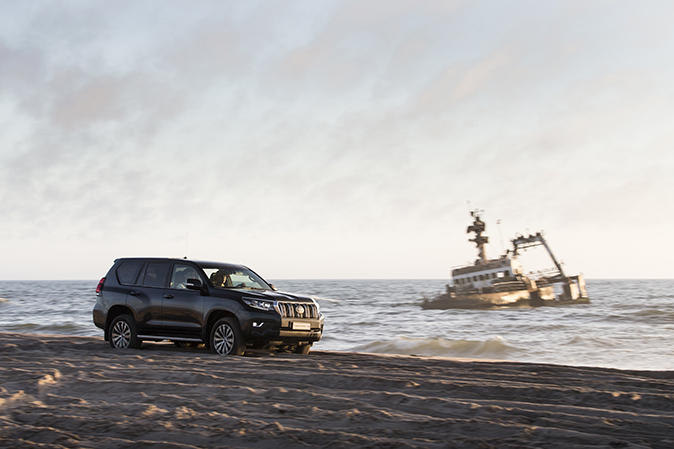
This has always been a treacherous spot. ‘Skeleton Coast’ is actually a relatively new name—it was coined in a 1944 book about the sinking of the Dunedin Star — but almost five hundred years earlier the first Portuguese sailors to visit this area gave it an equally dramatic name: ‘The Gates of Hell’. It was horrifyingly apt: escaping the surf to get back out to sea is all but impossible in a boat powered by oar or sail, meaning that many sailors ended up stranded in the dunes to face their doom. Abandon hope, all ye who make landfall.
Sign up for the Country Life Newsletter
Exquisite houses, the beauty of Nature, and how to get the most from your life, straight to your inbox.
One thing the Skeleton Coast doesn’t have in common with Hell is the temperature. Rain might be almost unknown but fog and cloud cover are near constant for most of the year, thanks to the Benguela Current that draws freezing waters up from the Antarctic in a sort of reverse Gulf Stream effect. We visited at the height of summer, but the temperature was under 20˚C and the water as chilly as a May Day dip in Brighton.
No wonder the only mammals to live here in any numbers are seals, who live in a string of vast colonies along the coast. We paid a visit to one of those colonies, which had around 100,000 residents – none of whom seemed the slightest bit bothered when a fleet of dusty Toyotas poured out a stream of awestruck, camera-toting journalists.
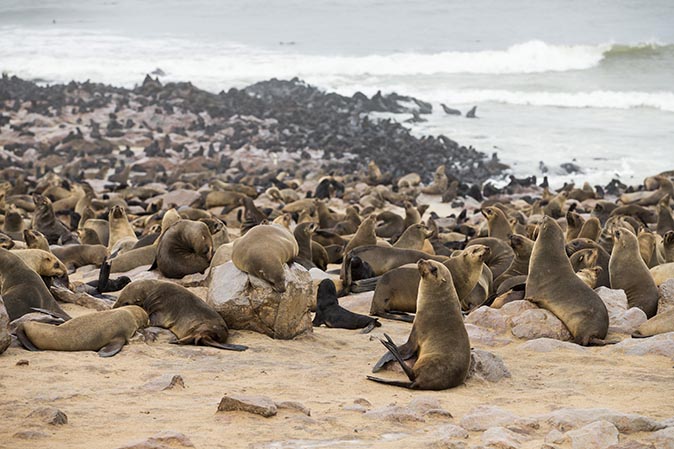
The contrast just 10 miles inland was extraordinary: the skies were clear and the tropical sun immediately made itself felt, beating down on us and bidding us to switch on the Land Cruiser’s air conditioning and fan-cooled seats. What those Portuguese sailors stuck on the shore would have given for such comforts – not to mention a 2.8-litre diesel engine to get them to civilisation.
Civilisation, however, is something that this place has never known. Most deserts, even the mighty Sahara, have been fairly wet at some point during human history. Not the Namib, which has been almost entirely devoid of water for some 55 million years.
That said, a few hardy souls have left their mark: as we headed inland to the Brandberg mountains that loom on the horizon from hundreds of miles away, we stopped off to admire the White Lady cave paintings created by bushmen. Sheltered from the wind and with no rain to wash them away, the preservation of these 2,000-year-old images is staggering.

On we headed, the gravel-and-dust track turning increasingly rocky as we climb into the arid foothills of the Brandberg range. A quick fiddle with the Land Cruiser’s off-road controls proved necessary: low ratio gears were engaged, and a twist of the satisfyingly chunky ‘MTS’ knob (multi-terrain select, apparently) put the car into ‘loose rock’ mode, one of the five available to cover you for everything from snow and sand to bare rockfaces.
The MTS knob enjoyed a fair bit of twiddling over the course of the trip. At the end of day two I popped it into the ‘mud’ setting to plough through a couple of feet of water and waist-high reeds. The Land Cruiser will wade through 27.5 inches of water, apparently, and I’m pretty glad it didn’t get stuck at that point. Not just because my shoes would have got mighty wet if I’d had to jump out to get rescued, but also because it turned out an enormous male lion was just a few yards away.
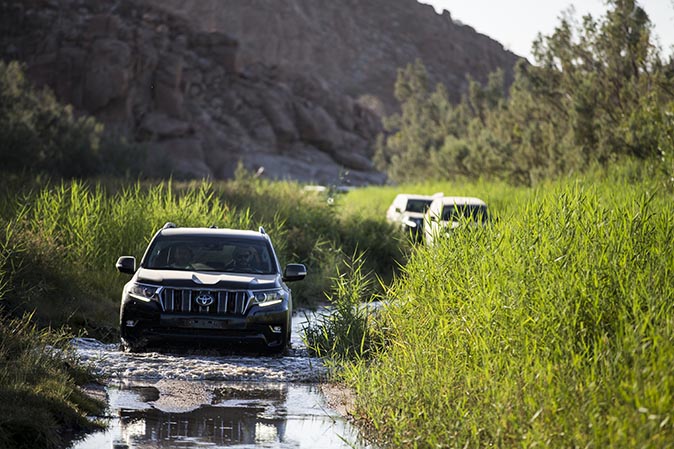
He saw us, but none of us had a clue he was there; we only found out later when the extraordinary Dr Flip Stander, the area’s long-standing lion conservation officer, happened to stop off at our camp that night after dinner. He’d been tracking this magnificent beast to protect it from farmers who’d blamed it for the recent deaths of dozens of cattle.
The next morning, as the Land Cruiser steamed effortlessly along another dried riverbed, we encountered wildlife which was easier to spot: graceful herds of oryx, families of baboons gazing sternly down from rocky outcrops, agama lizards with their characteristic ebony-black bodies and tangerine-orange heads. Sadly we saw no elephants, though I did at least come across plenty of their droppings – much to the delight of the aforementioned four-year-old back home when I sent him a picture later than night.
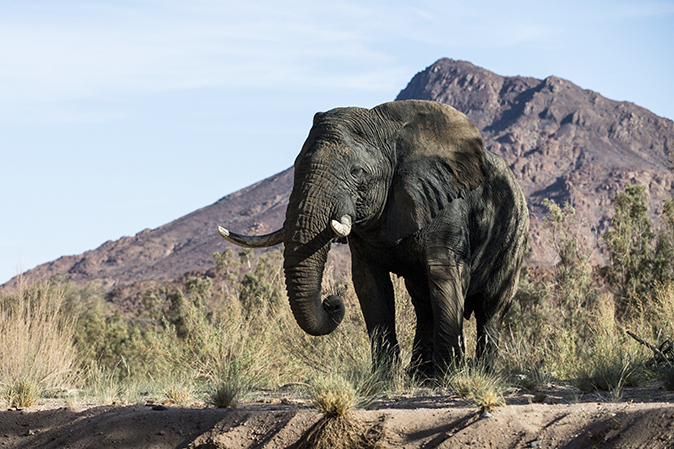
Throughout it all, the Land Cruiser remained effortlessly comfortable, poised, practical and powerful, the 2.8-litre diesel and its six-speed automatic gearbox beautifully in sync. Only once, in calf-deep, flour-soft sand, did I verge on getting stuck; a switch into ‘sand mode’ with that MTS knob helped me pull away easily. It’s nice to know that the car’s gadgetry isn’t just there to add another bullet point to the brochure.
The only disappointment, in fact, came on the final day when we turned off the dirt tracks and returned to tarmac. The car seemed to want to experience yet more of Namibia. I knew exactly how it felt.
- - -
Toyota Land Cruiser 2.8 D-4D: The details
- Priced: from £32,795 (top-of-the-range Invincible starts at £52,295)
- Combined fuel consumption: 38.1mpg
- Power: 174bhp, 331lb/ft torque at 1600rpm
- 0-62mph: 12.7sec
- Top speed: 108mph
What's new, what isn't in the new Toyota Land Cruiser
The brand new model of Land Cruiser which we tested out in Namibia has a wealth of changes from the last iteration – some are complicated, as detailed above, but others include practical touches such as a scooped-out bonnet which improves visibility at the front.
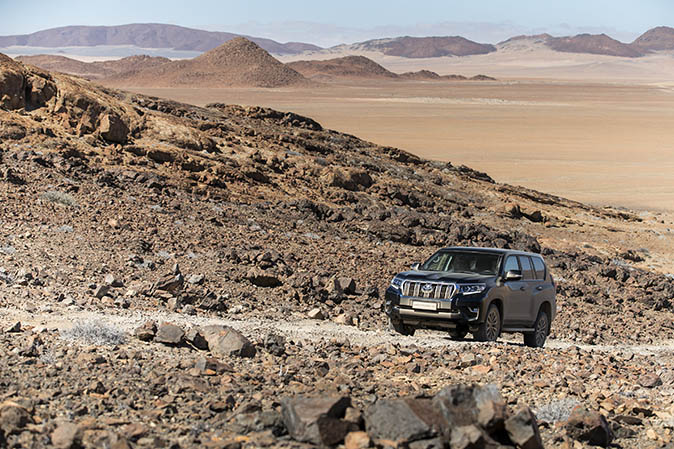
Many more things remain the same as ever, though: the Land Cruiser still uses a separate chassis instead of a 'monocoque' construction that most SUVs use. A monocoque will probably give you a better ride negotiating the back streets of Kensington, but if you're off-roading then the thinking is that a separate chassis is a better bet.
One of the tweaks to the Toyota range might woo Land Rover enthusiasts who still lament the discontinuation of the beloved Defender: the new ‘Utillity’ model is a spartanly-equipped, no-nonsense 4x4 priced from around £33,000.
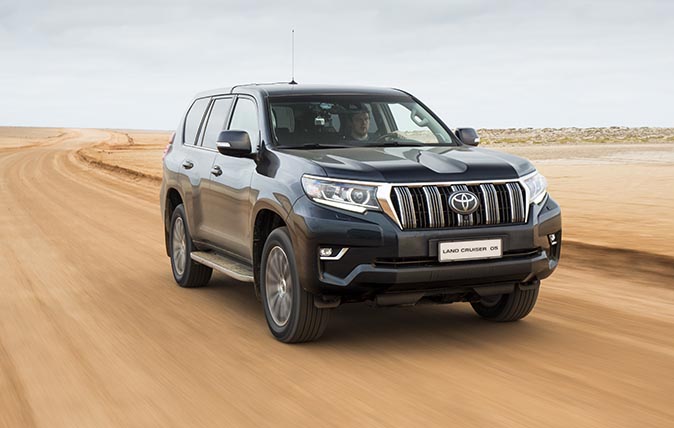
Getting stuck
The Land Cruiser’s gadgetry won’t protect you from everything: two of the journalists on the trip did manage to get stuck, both while going through water, by committing one of off-roading’s two deadly sins: stopping when you should be carrying on. The other, incidentally, is carrying on when you should be stopping — something which my co-driver for the week very nearly did while about to fall off the edge of a four-foot boulder.
The Lion king
Dr Philip ‘Flip’ Stander is an extraordinary man, worthy of a feature of his own. Born in Namibia, educated at Cambridge, he returned to his homeland and dedicated his life to protecting Namibia’s extraordinary desert-adapted lions. They’re the only big cats in the world who survive entirely without drinking water – they get all the moisture they need from their diet, and in part by licking the morning dew off each other’s fur.
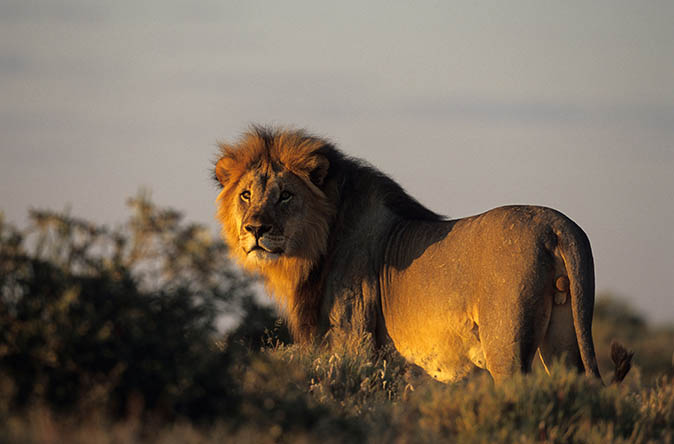
Exploring Namibia for yourself
Our 4x4 safari in Namibia was run by Danie van Ellewee and Hein Truter of Live The Journey (www.livethejourney.co.za), who shared their knowledge and stories far beyond off-roading, covering everything from 1,500-year-old plants to the war in neighbouring Angola.
Make sure you get our and about on foot as well, however: on the final morning we took part in a fascinating ‘Living Dunes’ experience, with a guide who unearthed deadly spiders, delightful lizards and a very, very angry little snake…
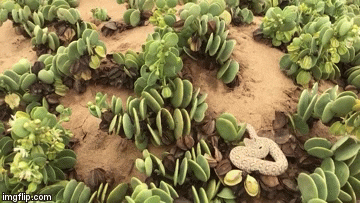
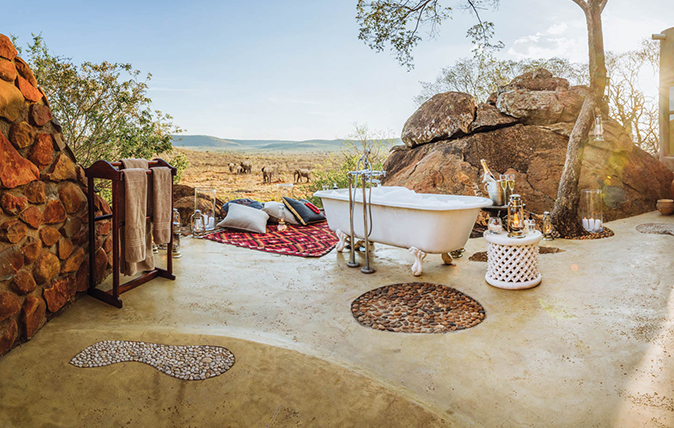
Africa's greatest watering holes: Top 10 tubs with a view
What could be better than sinking into the ultimate bath after a day of wine tasting, walking or wildlife spotting?
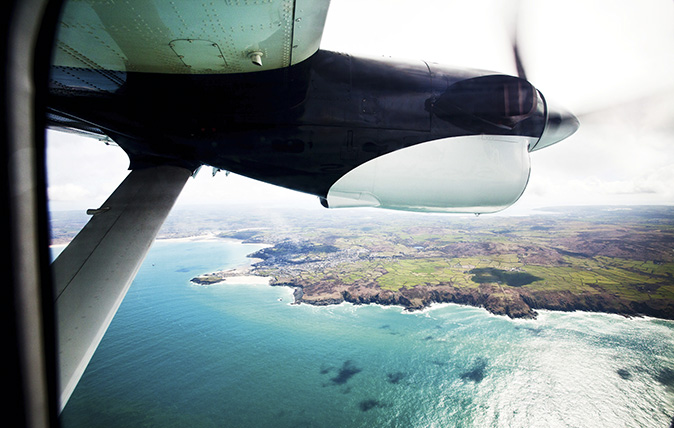
Credit: Isles of Scilly Travel
Monkeys, cows and slugs on the runway: The life of the rural pilots who keep our communities alive
Live monkeys in the cargo, slugs on the runway and ‘schizophrenic’ weather conditions are all in a day’s work finds
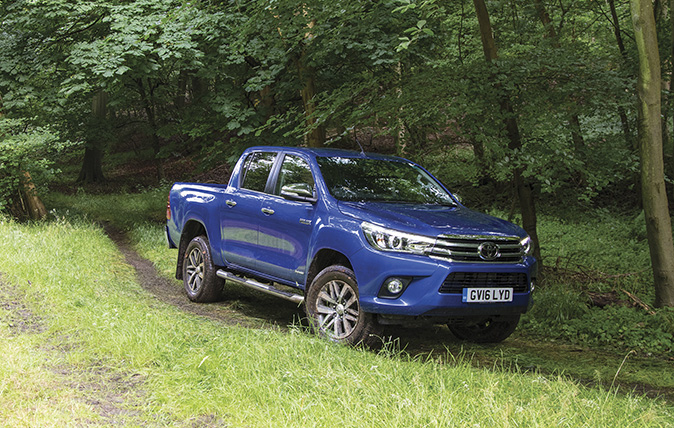
Toyota Hilux Invincible review: ‘It’s not going to win any drag races, but it will drag a gun-trailer out of a muddy field’
The latest incarnation of Toyota’s Hilux Invincible double-cab pick-up, with a refined engine and a more spacious interior, is still
Toby Keel is Country Life's Digital Director, and has been running the website and social media channels since 2016. A former sports journalist, he writes about property, cars, lifestyle, travel, nature.
-
 The Business Class product that spawned a generation of knock-offs: What it’s like to fly in Qatar Airways’ Qsuite cabin
The Business Class product that spawned a generation of knock-offs: What it’s like to fly in Qatar Airways’ Qsuite cabinQatar Airways’ Qsuite cabin has been setting the standard for Business Class travel since it was introduced in 2017.
By Rosie Paterson
-
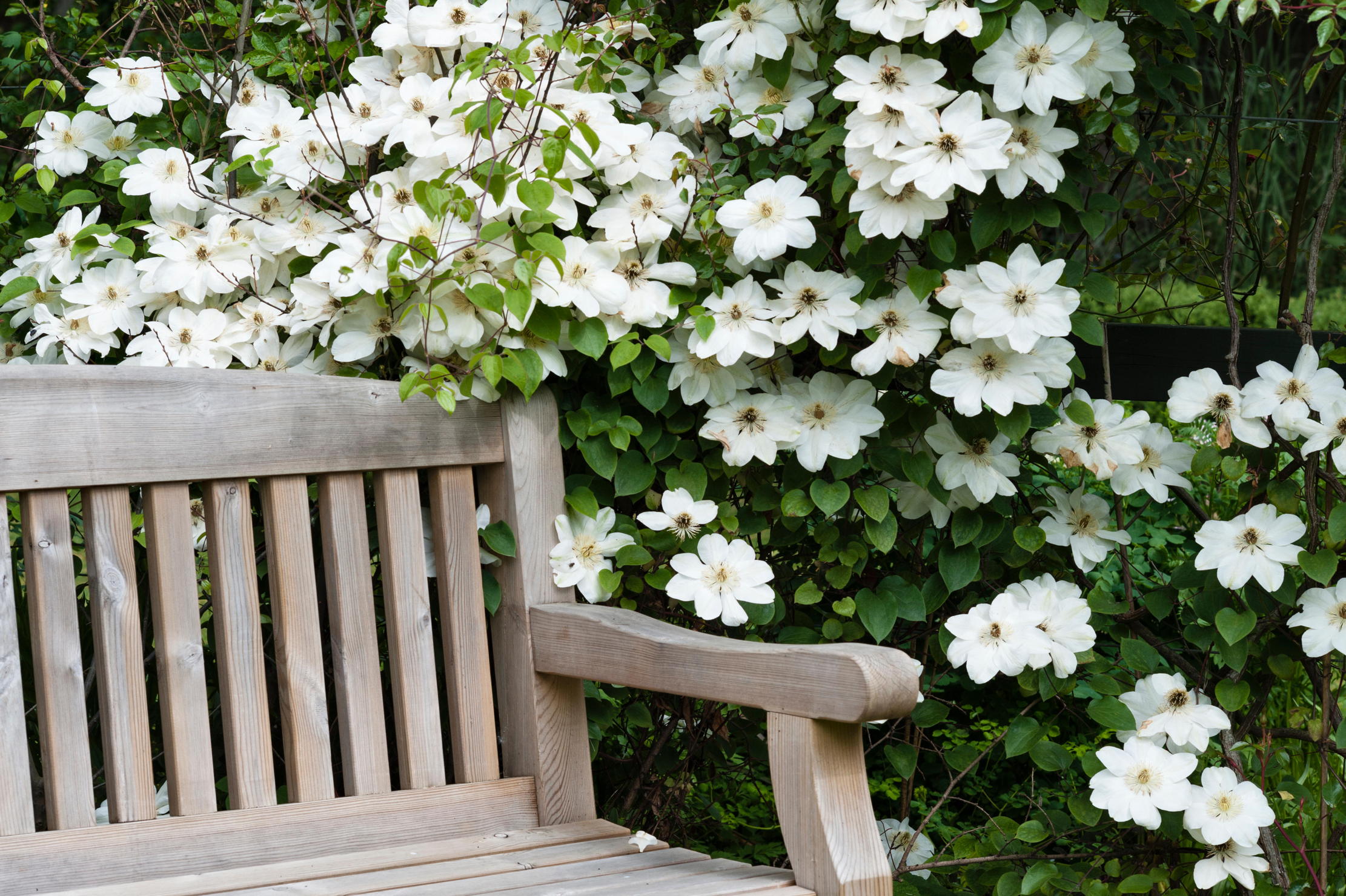 Six of the best Clematis montanas that every garden needs
Six of the best Clematis montanas that every garden needsClematis montana is easy to grow and look after, and is considered by some to be 'the most graceful and floriferous of all'.
By Charles Quest-Ritson
-
 Diamonds are everyone's best friend: The enduring appeal of one of Nature's sparkliest treasures
Diamonds are everyone's best friend: The enduring appeal of one of Nature's sparkliest treasuresEvery diamond has a story to tell and each of us deserves to fall in love with one.
By Jonathan Self
-
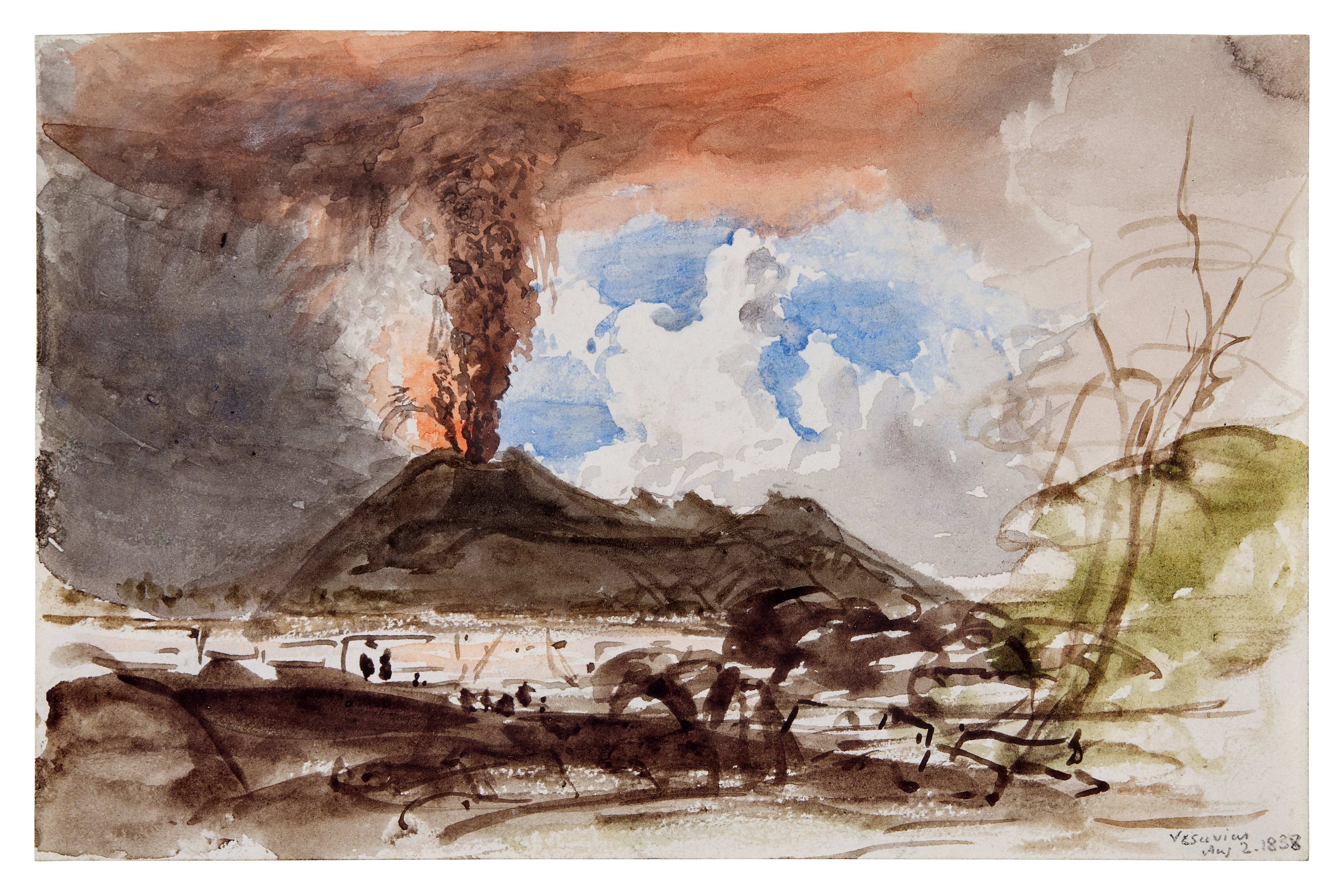 From Vinted to Velázquez: The younger generations' appetite for antiques and Old Masters
From Vinted to Velázquez: The younger generations' appetite for antiques and Old MastersThe younger generations’ appetite for everything vintage bodes well for the future, says Huon Mallalieu, at a time when an extraordinary Old Masters collection is about to go under the hammer.
By Huon Mallalieu
-
 The five minute guide to 'The Great Gatsby', a century on from its publication
The five minute guide to 'The Great Gatsby', a century on from its publication'The Great Gatsby' sold poorly the year it was published, but, in the following century, it went on to become a cornerstone of world literature.
By Carla Passino
-
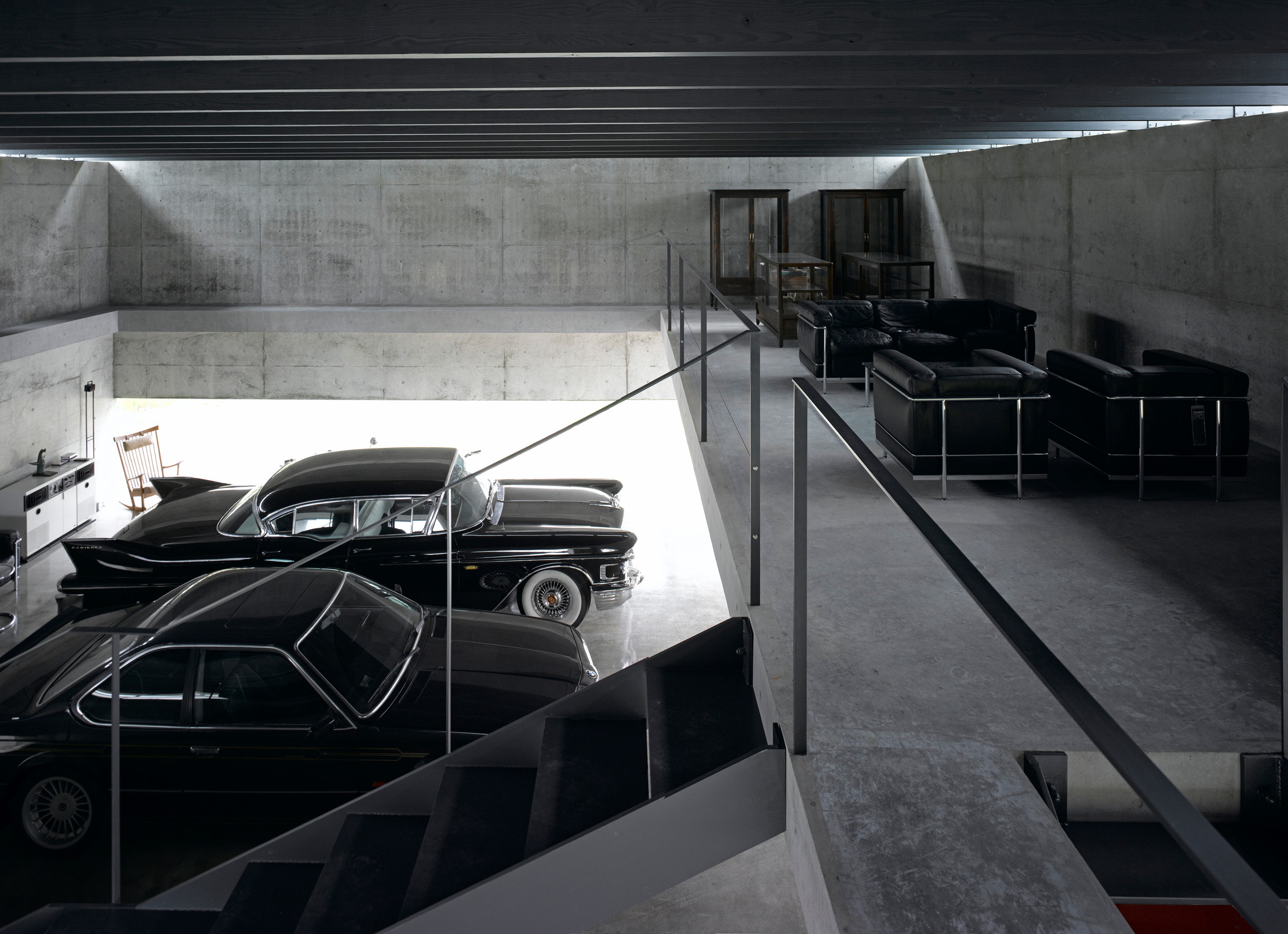 Shark tanks, crocodile lagoons, laser defences, and a subterranean shooting gallery — nothing is impossible when making the ultimate garage
Shark tanks, crocodile lagoons, laser defences, and a subterranean shooting gallery — nothing is impossible when making the ultimate garageTo collectors, cars are more than just transport — they are works of art. And the buildings used to store them are starting to resemble galleries.
By Adam Hay-Nicholls
-
 ‘David Hockney 25’ at the Fondation Louis Vuitton: Britain’s most influential contemporary artist pops up in Paris to remind us all of the joys of spring
‘David Hockney 25’ at the Fondation Louis Vuitton: Britain’s most influential contemporary artist pops up in Paris to remind us all of the joys of springThe biggest-ever David Hockney show has opened inside the Fondation Louis Vuitton in Paris — in time for the season that the artist has become synonymous with.
By Amy Serafin
-
 Under the hammer: A pair of Van Cleef & Arpels earrings with an intriguing connection to Princess Grace of Monaco
Under the hammer: A pair of Van Cleef & Arpels earrings with an intriguing connection to Princess Grace of MonacoA pair of platinum, pearl and diamond earrings of the same design, maker and period as those commissioned for Grace Kelly’s wedding head to auction.
By Rosie Paterson
-
 Why LOEWE decided to reimagine the teapot, 25 great designs over
Why LOEWE decided to reimagine the teapot, 25 great designs overLoewe has commissioned 25 world-leading artists to design a teapot, in time for Salone del Mobile.
By Amie Elizabeth White
-
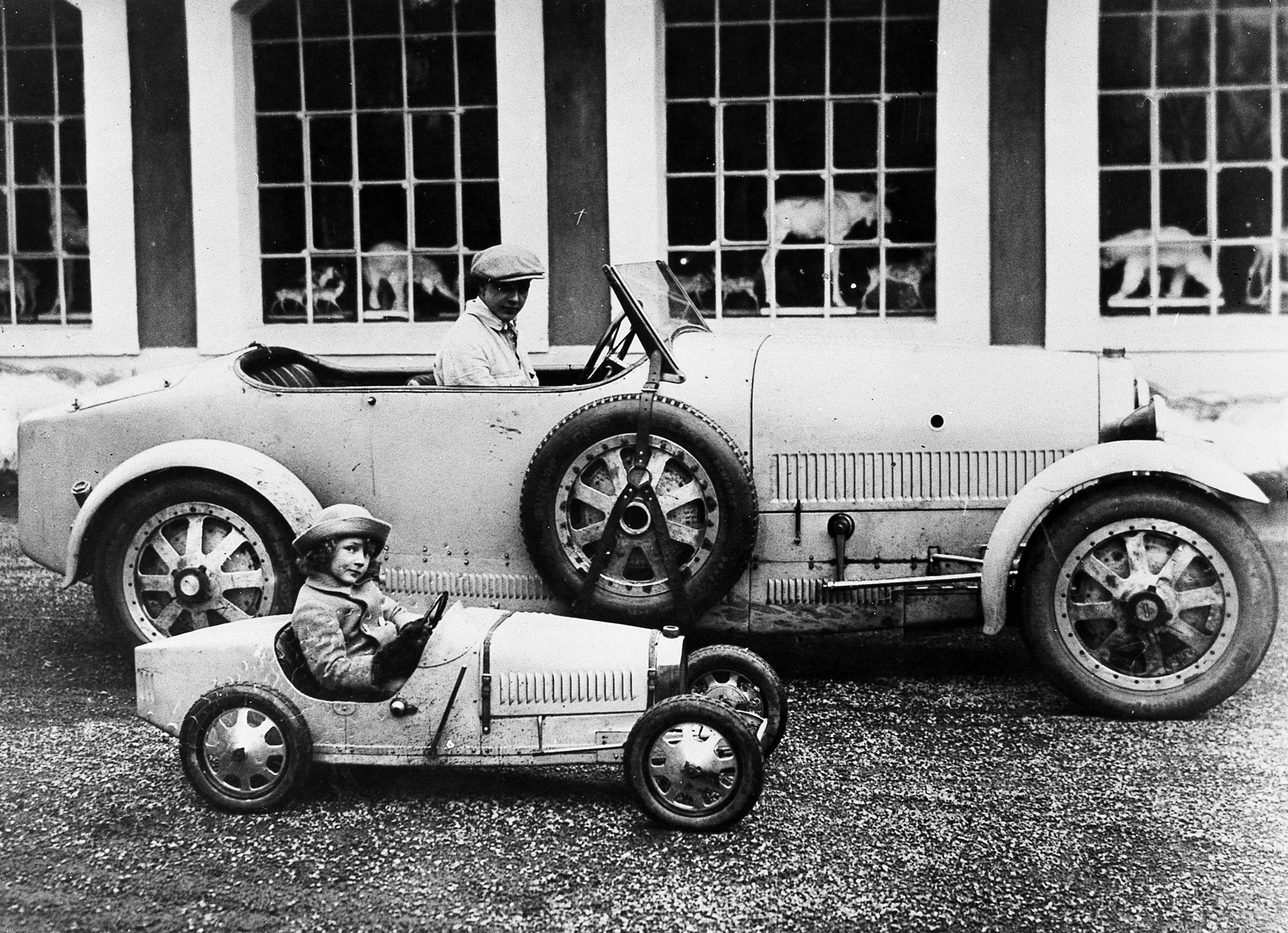 The brilliant Bugattis: Sculpture, silverware, furniture and the fastest cars in the world
The brilliant Bugattis: Sculpture, silverware, furniture and the fastest cars in the worldA new exhibition at this year's Treasure House Fair will shine a light on the many talents of the Bugatti dynasty.
By James Fisher
